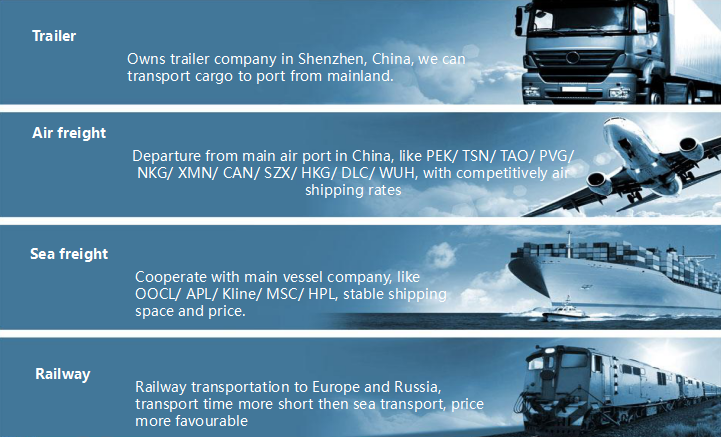How to define Measurement Cargo and heavy goods From Sunny worldwide logistics
- Author:Cynthia
- Source:Sunny worldwide logistics
- Release Date:2019-01-24
Sunny worldwide logistics share the logistics knowledge is how to define Measurement Cargo and heavy goods.

First, the calculation method of shipping is generally:
1. The division of heavy goods and light goods by sea is much simpler than that of air transportation. China's sea freight consolidation business basically divides heavy goods and light goods according to the standard of 1 cubic meter equal to 1 tons. In the LCL, heavy goods are rare, basically light goods, and shipping LCL is calculated according to the volume of freight, compared with air transport according to the weight of the freight is fundamentally different, so it is much simpler. Many people have done a lot of shipping, but have never heard of light goods and heavy goods, because they are basically not used.
2. According to the stowage of the ship, any cargo whose cargo stowage factor is less than the ship's capacity factor is called heavy cargo (Dead).
Weight Cargo/Heavy Goods); for goods with a cargo stowage factor greater than the ship's capacity factor, called Cargo/Light (Measurement Cargo/Light)
Goods).
3. According to the calculation of freight angle and international shipping business practices, any cargo with a stowage factor of less than 1.1328 m3/ton or 40 cubic feet/ton is called heavy cargo; where the cargo stowage factor is greater than 1.1328 m3/ton or 40 Cubic feet per ton of cargo, called light goods
4. The concept of heavy goods and light goods is closely related to stowage, transportation, storage and billing. The carrier or freight forwarder company distinguishes heavy goods, light goods/bubble goods according to certain standards.
Volume weight = length cm * width cm * height cm / 6000
When the weight of the volume of the goods is greater than the actual weight of the goods, it is generally calculated by volume and weight;
When the weight of the cargo volume is less than the actual weight of the cargo, it will be calculated based on the actual weight.
Second, the calculation method of express delivery and air transportation is generally:
Regular items:
Length (cm) x width (cm) x height (cm) ÷ 6000 = volumetric weight (KG), ie 1 CBM ≈ 166.666667 KG.
Irregular items:
Longest (cm) × widest (cm) × highest (cm)
÷6000=volume weight (KG), ie 1 CBM ≈166.66667 KG.
This is an internationally accepted algorithm.
In short, 1 cubic meter of weight greater than 166.67 kilograms is called heavy cargo, and less than 166.67 kilograms is called foam.
Heavy goods are charged according to the actual gross weight, and the foamed goods are charged according to the volumetric weight.

Regular items:
Length (cm) x width (cm) x height (cm) ÷ 6000 = volumetric weight (KG), ie 1 CBM ≈ 166.666667 KG.
Irregular items:
Longest (cm) × widest (cm) × highest (cm)
÷6000=volume weight (KG), ie 1 CBM ≈166.66667 KG.
This is an internationally accepted algorithm.
In short, 1 cubic meter of weight greater than 166.67 kilograms is called heavy cargo, and less than 166.67 kilograms is called foam.
Heavy goods are charged according to the actual gross weight, and the foamed goods are charged according to the volumetric weight.

If the above is too difficult to understand, it doesn't matter, give you the easiest way to distinguish:
1. The shipping consolidation is based on the density of water 1000KGS/1CBM. The cargo reuse tons are more than the cubic number, more than 1 is heavy goods, less than 1 is light goods, but now many voyages are limited, so the ratio is adjusted to 1 ton / 1.5 CBM.
2. Air transport, based on 1000 to 6, which is equivalent to 1CBM = 166.6KGS, 1CBM more than 166.6 is heavy goods, the opposite is the bubble. There is also a consolidation of the inland point to the United States due to the weight limit of the US highway, the ratio is more difficult than the above two
2. Air transport, based on 1000 to 6, which is equivalent to 1CBM = 166.6KGS, 1CBM more than 166.6 is heavy goods, the opposite is the bubble. There is also a consolidation of the inland point to the United States due to the weight limit of the US highway, the ratio is more difficult than the above two
For more logistics information, please contact Sunny worldwide logistics
